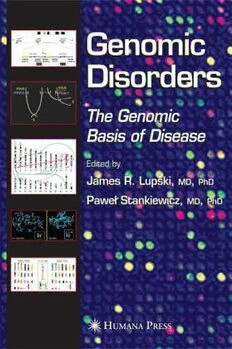
Genomic Disorders: The Genomic Basis of Disease PDF
447 Pages·2006·4.347 MB·English
Most books are stored in the elastic cloud where traffic is expensive. For this reason, we have a limit on daily download.
Preview Genomic Disorders: The Genomic Basis of Disease
Description:
A grand summary and synthesis of the tremendous amount of data now available in the post genomic era on the structural features, architecture, and evolution of the human genome. The authors demonstrate how such architectural features may be important to both evolution and to explaining the susceptibility to those DNA rearrangements associated with disease. Technologies to assay for such structural variation of the human genome and to model genomic disorders in mice are also presented. Two appendices detail the genomic disorders, providing genomic features at the locus undergoing rearrangement, their clinical features, and frequency of detection.
See more
The list of books you might like
Most books are stored in the elastic cloud where traffic is expensive. For this reason, we have a limit on daily download.
